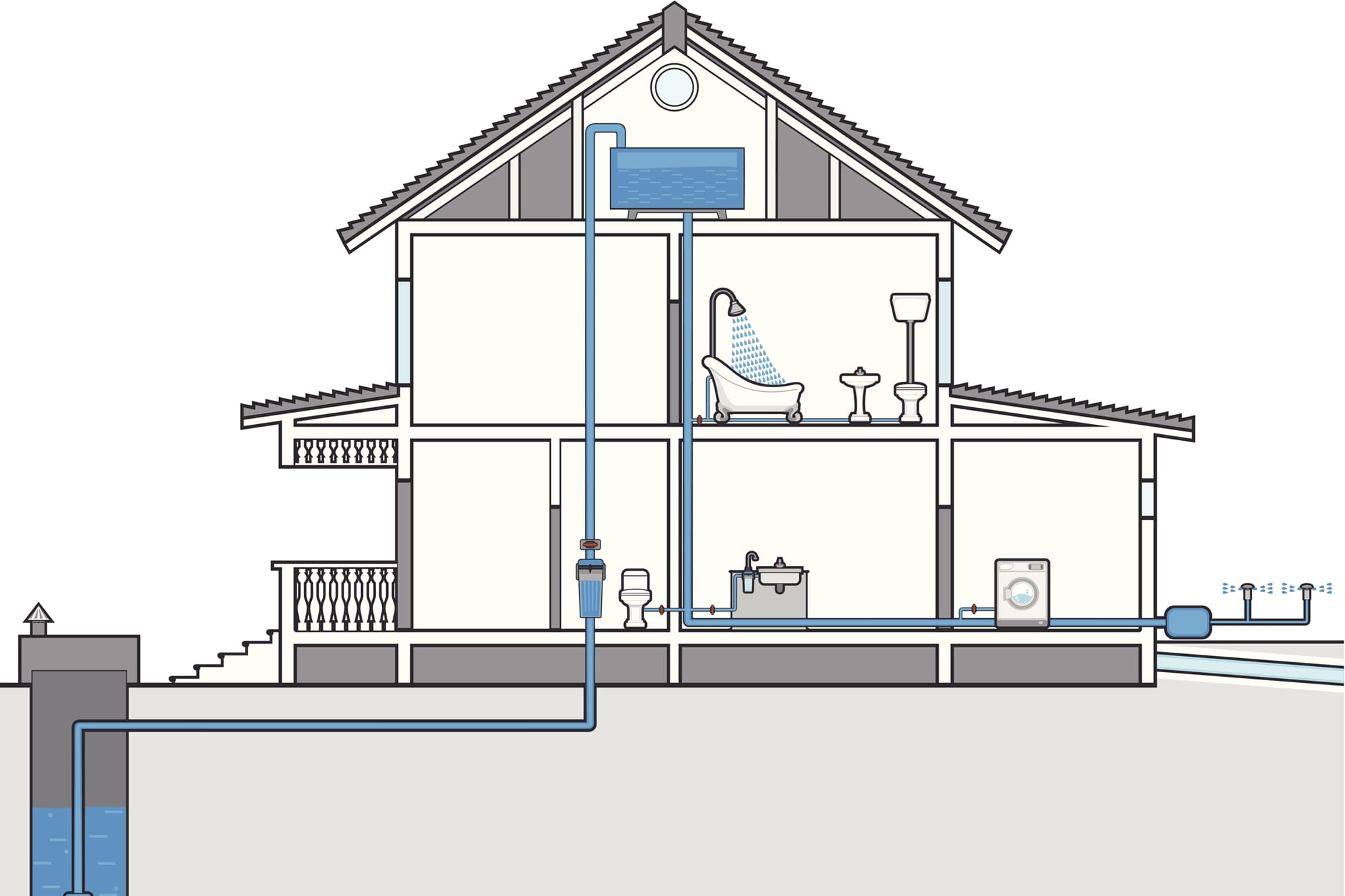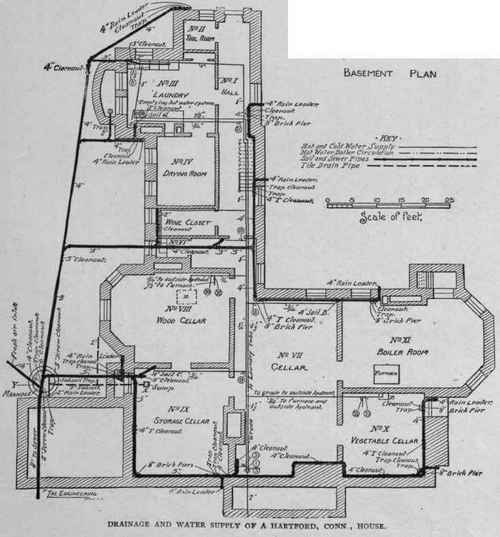The author is making a number of good annotation regarding Plumbing Installation 101: All You Need to Know in general in the content down below.

Recognizing just how your home's plumbing system works is necessary for every single property owner. From providing tidy water for drinking, food preparation, and showering to safely eliminating wastewater, a properly maintained pipes system is essential for your household's health and wellness and convenience. In this comprehensive guide, we'll explore the complex network that composes your home's pipes and deal tips on maintenance, upgrades, and managing usual issues.
Introduction
Your home's plumbing system is more than just a network of pipelines; it's an intricate system that guarantees you have access to clean water and reliable wastewater elimination. Recognizing its components and how they collaborate can assist you stop pricey repairs and guarantee whatever runs efficiently.
Standard Elements of a Pipes System
Pipelines and Tubes
At the heart of your plumbing system are the pipes and tubing that carry water throughout your home. These can be constructed from numerous products such as copper, PVC, or PEX, each with its advantages in regards to longevity and cost-effectiveness.
Components: Sinks, Toilets, Showers, and so on.
Fixtures like sinks, bathrooms, showers, and bathtubs are where water is made use of in your home. Understanding exactly how these components connect to the plumbing system assists in detecting troubles and preparing upgrades.
Valves and Shut-off Points
Shutoffs control the flow of water in your pipes system. Shut-off shutoffs are vital throughout emergencies or when you need to make repair work, allowing you to isolate parts of the system without interrupting water circulation to the entire home.
Water System System
Main Water Line
The main water line attaches your home to the municipal water or an exclusive well. It's where water enters your home and is distributed to numerous components.
Water Meter and Pressure Regulatory Authority
The water meter procedures your water use, while a stress regulator ensures that water moves at a risk-free pressure throughout your home's plumbing system, protecting against damages to pipes and fixtures.
Cold Water vs. Warm water Lines
Comprehending the distinction between cold water lines, which supply water straight from the primary, and hot water lines, which bring heated water from the hot water heater, assists in troubleshooting and planning for upgrades.
Drainage System
Drain Pipes and Traps
Drain pipes bring wastewater away from sinks, showers, and commodes to the drain or sewage-disposal tank. Catches protect against drain gases from entering your home and also catch particles that could cause obstructions.
Ventilation Pipes
Air flow pipes permit air right into the drain system, avoiding suction that can slow down drainage and cause catches to vacant. Proper air flow is necessary for preserving the honesty of your pipes system.
Relevance of Appropriate Drainage
Making certain appropriate water drainage prevents backups and water damages. Consistently cleaning drains pipes and maintaining catches can avoid expensive repairs and extend the life of your plumbing system.
Water Heater
Sorts Of Water Heaters
Hot water heater can be tankless or typical tank-style. Tankless heaters heat water on demand, while containers store warmed water for immediate use.
Just How Water Heaters Attach to the Plumbing System
Recognizing exactly how hot water heater attach to both the cold water supply and hot water distribution lines helps in detecting problems like insufficient warm water or leaks.
Upkeep Tips for Water Heaters
On a regular basis purging your water heater to get rid of debris, examining the temperature level settings, and checking for leakages can prolong its life expectancy and enhance power effectiveness.
Typical Plumbing Concerns
Leaks and Their Causes
Leakages can occur due to aging pipes, loose installations, or high water stress. Dealing with leakages without delay protects against water damages and mold growth.
Blockages and Obstructions
Clogs in drains pipes and toilets are typically brought on by flushing non-flushable things or a build-up of grease and hair. Using drain screens and being mindful of what decreases your drains pipes can protect against obstructions.
Indicators of Pipes Issues to Watch For
Low tide stress, slow drains pipes, foul odors, or unusually high water bills are signs of possible pipes troubles that must be resolved without delay.
Plumbing Maintenance Tips
Normal Evaluations and Checks
Arrange yearly pipes assessments to capture problems early. Seek signs of leaks, corrosion, or mineral build-up in taps and showerheads.
DIY Maintenance Tasks
Simple tasks like cleansing tap aerators, looking for commode leakages making use of color tablets, or insulating subjected pipes in chilly climates can stop significant plumbing problems.
When to Call an Expert Plumbing Technician
Know when a pipes concern calls for professional know-how. Trying complex repair work without proper knowledge can lead to more damage and higher repair work costs.
Upgrading Your Plumbing System
Factors for Updating
Updating to water-efficient components or replacing old pipes can boost water top quality, minimize water bills, and increase the value of your home.
Modern Pipes Technologies and Their Advantages
Discover modern technologies like smart leakage detectors, water-saving commodes, and energy-efficient hot water heater that can conserve cash and lower ecological influence.
Expense Factors To Consider and ROI
Compute the upfront prices versus lasting financial savings when considering pipes upgrades. Several upgrades spend for themselves via minimized energy expenses and fewer repair work.
Ecological Influence and Conservation
Water-Saving Components and Appliances
Setting up low-flow taps, showerheads, and commodes can substantially decrease water use without giving up efficiency.
Tips for Lowering Water Use
Easy routines like fixing leakages quickly, taking much shorter showers, and running complete loads of washing and recipes can conserve water and reduced your utility costs.
Eco-Friendly Pipes Options
Consider sustainable pipes products like bamboo for floor covering, which is durable and green, or recycled glass for counter tops.
Emergency Readiness
Actions to Take Throughout a Plumbing Emergency
Know where your shut-off valves are located and how to turn off the water system in case of a ruptured pipe or significant leakage.
Relevance of Having Emergency Contacts Helpful
Keep call info for neighborhood plumbing technicians or emergency solutions easily available for fast reaction throughout a plumbing situation.
DIY Emergency Situation Fixes (When Suitable).
Short-lived fixes like making use of duct tape to spot a leaking pipeline or positioning a container under a leaking faucet can lessen damage up until a professional plumbing professional gets here.
Final thought.
Recognizing the composition of your home's pipes system empowers you to keep it effectively, conserving time and money on repair services. By following routine maintenance regimens and staying notified about contemporary pipes modern technologies, you can guarantee your plumbing system runs successfully for many years ahead.
HOW YOUR PLUMBING SYSTEM WORKS
Which Pipes Do What?
Blue lines = fresh water supply entering the building
Red lines = hot water supply entering the building
Grey lines = pipes carrying waste away from the building and venting pipes carrying gases away from the building (through the roof)
YOUR MAIN PLUMBING SYSTEMS
There are two main plumbing systems that support your home s basic plumbing needs one that brings clean water into your home, and one that sends dirty water away from your home. Connected to the toilet, bath, shower, and other faucets in your home, these two systems keep your water flowing in the right directions.
ACCESSING FRESH WATER
Fresh and clean water is brought into your home through the main water supply line . Filtered through one pipe, this water is pressured to flow into the various fixtures in your home at any given time.
This water can be sourced from a well located on your property, a pond or river (mostly cottages), or, as in most cases, from the city s municipal water treatment centre. However, it is important to note that water that is untreated, such as the water siphoned from ponds or rivers, may not be safe to drink. Personal water supplies always need to be treated for hardness and contaminants before consumed.
MUNICIPAL WATER SUPPLIES
Improve taste and odour
Remove sediment
Eliminate hardness
Reduce chlorine
COLD WATER SUPPLY VS. HOT WATER SUPPLY
Cold water flows into your home or building through the service line, which then distributes hot or cold water to your fixtures. This line is most commonly run through a central column that runs floor to floor. Hot water runs in short and straight pipes as the longer the pipeline, the more heat that will be lost in the transfer. Having shorter pipes also allows residents to access hot water more quickly.
WASTE WATER SYSTEM
Your wastewater system is divided into two parts pipes that send wastewater away from your home and venting pipes that send sewer gas away from your home. Sewage water travels through pipes that flush the water and waste towards local sewers that are operated and managed by your city or town. Most sewer systems rely on gravity to move the wastewater to where it needs to go.
The further away from your toilet or sink, the larger wastewater pipes become. This allows for waste to be disposed of from various parts of your home or business at once without pipe blockages. The angle and flow of these pipes are also essential for keeping your waste pipes clear of build up.
https://harrisplumbing.ca/how-your-home-plumbing-system-works/

HOW YOUR PLUMBING SYSTEM WORKS
Which Pipes Do What?
YOUR MAIN PLUMBING SYSTEMS
There are two main plumbing systems that support your home s basic plumbing needs one that brings clean water into your home, and one that sends dirty water away from your home. Connected to the toilet, bath, shower, and other faucets in your home, these two systems keep your water flowing in the right directions.
ACCESSING FRESH WATER
Fresh and clean water is brought into your home through the main water supply line . Filtered through one pipe, this water is pressured to flow into the various fixtures in your home at any given time.
This water can be sourced from a well located on your property, a pond or river (mostly cottages), or, as in most cases, from the city s municipal water treatment centre. However, it is important to note that water that is untreated, such as the water siphoned from ponds or rivers, may not be safe to drink. Personal water supplies always need to be treated for hardness and contaminants before consumed.
MUNICIPAL WATER SUPPLIES
COLD WATER SUPPLY VS. HOT WATER SUPPLY
Cold water flows into your home or building through the service line, which then distributes hot or cold water to your fixtures. This line is most commonly run through a central column that runs floor to floor. Hot water runs in short and straight pipes as the longer the pipeline, the more heat that will be lost in the transfer. Having shorter pipes also allows residents to access hot water more quickly.
WASTE WATER SYSTEM
Your wastewater system is divided into two parts pipes that send wastewater away from your home and venting pipes that send sewer gas away from your home. Sewage water travels through pipes that flush the water and waste towards local sewers that are operated and managed by your city or town. Most sewer systems rely on gravity to move the wastewater to where it needs to go.
The further away from your toilet or sink, the larger wastewater pipes become. This allows for waste to be disposed of from various parts of your home or business at once without pipe blockages. The angle and flow of these pipes are also essential for keeping your waste pipes clear of build up.
https://harrisplumbing.ca/how-your-home-plumbing-system-works/
We are very occupied with Exploring Your Homes Plumbing Anatomy and I am assuming you enjoyed our post. Sharing is good. You just don't know, you may very well be helping someone out. Thank-you for going through it.
Recurring Service Plans